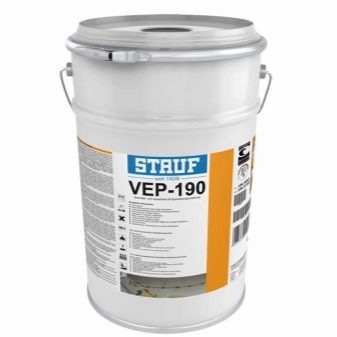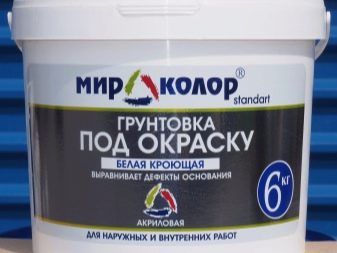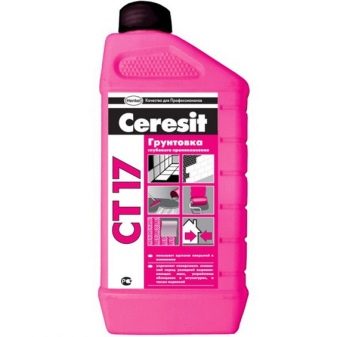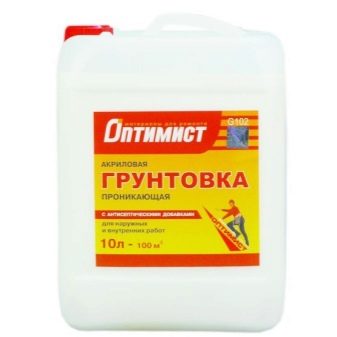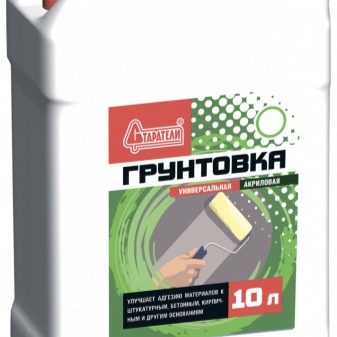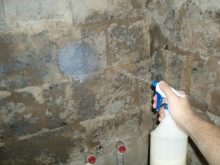What primer to choose for concrete surfaces?

Concrete is a sought-after building material with which you can build durable and reliable buildings. Some believe that this material is too strong, so it does not need additional protection, however, during drying in the concrete, pores are formed, into which water falls. It adversely affects the surface of the material. To prevent this, experienced experts recommend applying a primer on the floor and walls of concrete.
Special features
To understand how important a primer is for concrete surfaces, one needs to know all its features.First of all, it serves to protect against mechanical and chemical influences.
Surface treatment is necessary due to the following factors:
- The structure of concrete is porous, because of which it absorbs moisture, which destroys the material. The soil carefully clogs the pores, significantly reducing the absorption of the base. This prolongs the life of the structure.
- The surface of the concrete does not adhere well to certain materials. The primer improves adhesion and increases the strength of the coating.
- The top layer of cheap concrete is fragile, and the primer will strengthen it. Therefore, material processing is required in rooms with high climatic or mechanical loads.
- Virtually all formulations have antiseptic properties. This prevents mold and mildew on the surface.
The primer ensures good sealing of the walls and floor, retains its strength and improves performance properties. That is why it can be used not only before finishing the floor, but also as a finishing coating.
Types and characteristics
Start construction work without priming or impregnating the concrete is not worth it.The materials for these processes are made from polymeric binder compositions, and their basis is water. Primers for concrete differ from each other in composition and characteristics. There are the following types:
- Polystyrene. In residential areas, this material is not recommended, as it contains a solvent, which is a toxic substance. This primer is used in industrial premises or for facades.
The advantages include providing high-quality adhesion of concrete with paints, as well as the fact that the primer is frost-resistant and waterproofing.
- Polyvinyl acetate. This material dries in just 40 minutes, after which PVA glue is applied to the surface. After these procedures, you can proceed to finishing the walls or floor. The primer guarantees good adhesion.
- Based on epoxy resin. The best choice for self-leveling floors. Such a primer prolongs the life of the base material. For residential buildings, it can be used only if there are no pets or houseplants, flowers, as there is a caustic solvent in the primer.
- Alkyd A great option for both interior and exterior. The disadvantage is that such a primer dries out in approximately 17 hours.
- Acrylic for painting. Enjoys the most popular. The primer is made of acrylic substances, so that it does not have a strong odor. It also protects the surface from the negative effects of the environment, is quickly absorbed, dries in a maximum of 5 hours. This is a safe material that allows you to save money.
Please note that the acrylic primer can not be applied to the facades of buildings.
- Soil enamel. The material, which consists of paint and soil mixture. Can "boast" excellent performance and good adhesion.
- Primer deep penetration. It is used for concrete and foam concrete from different manufacturers, with different densities. Excellent proven when working with porous surfaces. This primer penetrates 5-9 mm deep. The material contains latex particles. Once inside, they are converted to glue, which compacts the structure of concrete as much as possible.
Deep penetration primer is an adhesive material forprocessing of old concrete walls. It is also used to increase the strength of aerated concrete during the construction of structures.
- Mixture with quartz sand. Possesses good adhesion, makes the surface stronger.
Whatever type of primer you choose, remember that a mixture with an antiseptic is best for concrete, especially in a damp room.
How to choose?
The choice of primer is not as complicated as it seems. The focus should be on the material that was used to make the subfloor. So, for example, for interior work on walls or floors made of concrete or gas block, choose an epoxy or acrylic type of material.
If priming is planned in buildings with high humidity and without heating, then give preference to a material with water-repellent substances in the composition.
Opaque materials are intended for painted surfaces. For laying tiles buy special soil. This is necessary so that it does not pull out water from the used adhesive solutions.
Priming is an obligatory stage of wall finishing before plastering them. This step will ensure good adhesion of materials.Also, the primer is a good antiseptic that prevents the appearance of fungus and mold on the surface.
Before priming, be sure to clean the surface of dust and dirt.
A quality primer should have the following features:
- deep penetration;
- even application;
- the formation of a water-repellent film after the application of the material;
- reducing the cost of other materials;
- high level of waterproofing.
When choosing a primer, pay attention to the conditions of application. If the work will be carried out in the cold, it is appropriate to use polyurethane soil. If a strong smell is unacceptable, then the best choice would be epoxy primer. Also do not forget about the level of vibration loads on the floor and the period for which the object should be handed over.
From the following video you can learn how to properly ground the walls.
Famous manufacturers and reviews
The modern market offers acrylic blends of deep penetration, which are suitable for processing any surfaces. Demanded is a mixture for concrete Ceresit. It is produced by the world-famous company Henkel in the “summer” and “winter” versions.
It is possible to use such a primer not only on concrete walls, but also for leveling floor screeds.
It is also worth noting the primer "Optimist", which received a huge amount of positive feedback. It increases the strength of the surface, is a good antiseptic.
- Ceresit CT 17 penetrates deep into concrete, has excellent adhesive properties. This primer can be safely applied under wallpaper, plaster, panels. It forms a protective film, so it is recommended to use it for processing surfaces under tile or kermogranit.
It is necessary to work with such material in rubber gloves, as it corrodes hands.
- "Optimist" - composition from domestic producer. Indisputable advantage of a primer is ease of operation. Also worth noting is the fast drying speed. It forms a durable, slightly glossy surface.
The disadvantage is a sharp smell.
- "Miners" - budget material of deep penetration. Suitable for additional reinforcement of the concrete floor. Also improves base adhesion.
- Knauf tiefengrund - primer that is suitable for any subsequent finishing of concrete.
Differs in an economic expense.
- Vetonit - manufacturer of powdered building mixtures. The company's products are popular due to the ideal ratio of high quality and affordable price.
When choosing a material, be sure to read the instructions, which indicate the scope and the required technical characteristics of the treated surfaces.
Application Tips
The primer is applied to the walls with a roller or brush, as well as with a spray gun, spray gun or spray gun. So, if you plan to prime a small space, it is best to use a roller. For labor-intensive work, use a sprayer, which will save not only time but also effort.
Applying a primer is not such a difficult process, if you follow the instructions and take into account the advice of experts:
- the walls before applying the primer must be cleaned from dust and dirt;
- if the primer is on the floor or clothes, wash off the traces as soon as possible or wipe them with a damp cloth;
- work carefully: make sure that there are no streaks on the walls and that no mixture puddles form on the floor;
- Wear work clothes, not forgetting about glasses and gloves.
Ensure that the primer spreads evenly on the concrete surface. Before proceeding further, make sure that the primer is completely dry. If the base is peeling off, repeat the procedure.
The use of a primer provides a better finish and a durable result. The main thing is to choose the right material, taking into account subsequent work and operating conditions. Do not forget that it is better to overpay, but to get a quality result. Before choosing, carefully study the range of several well-known manufacturers.








